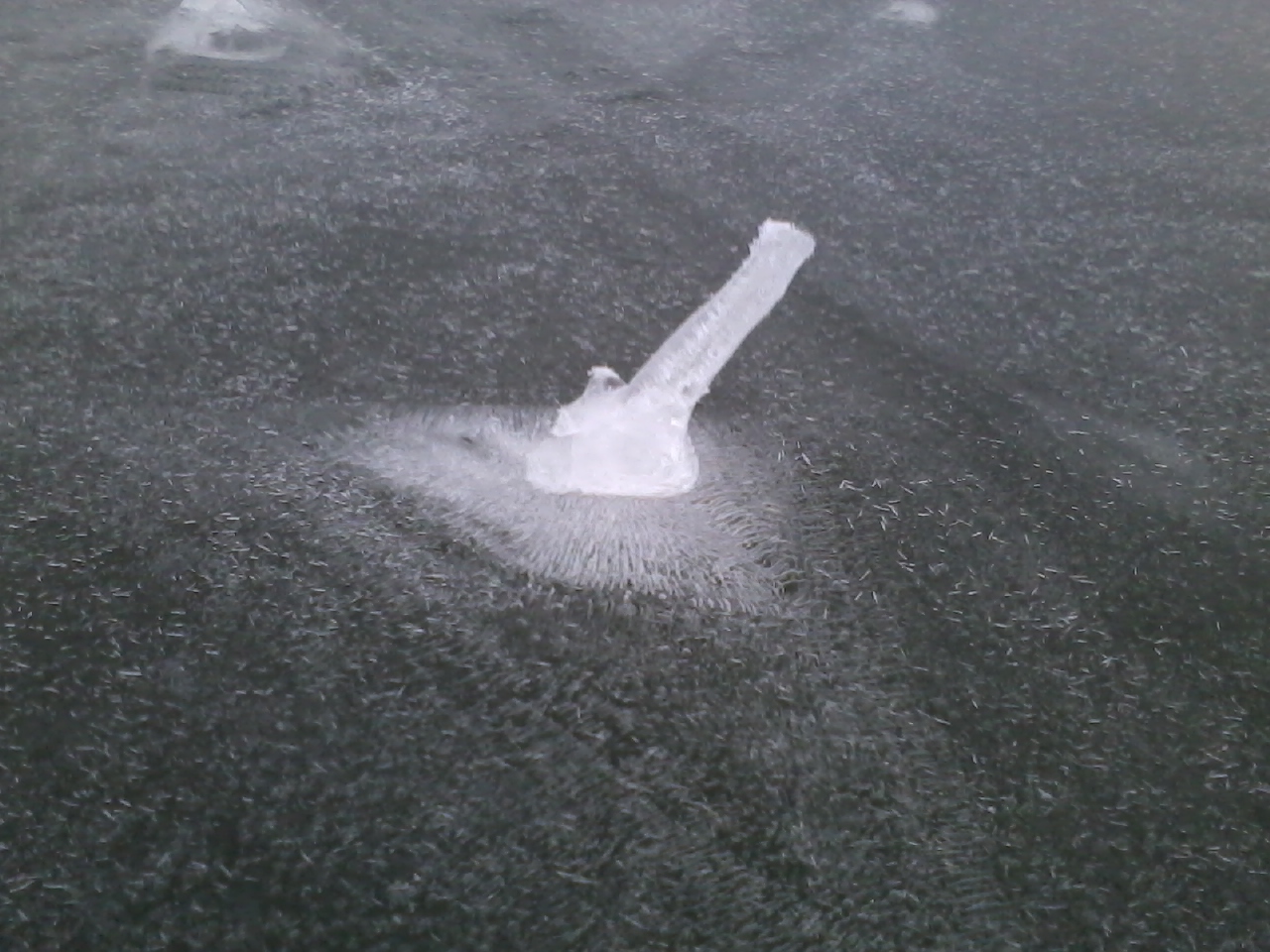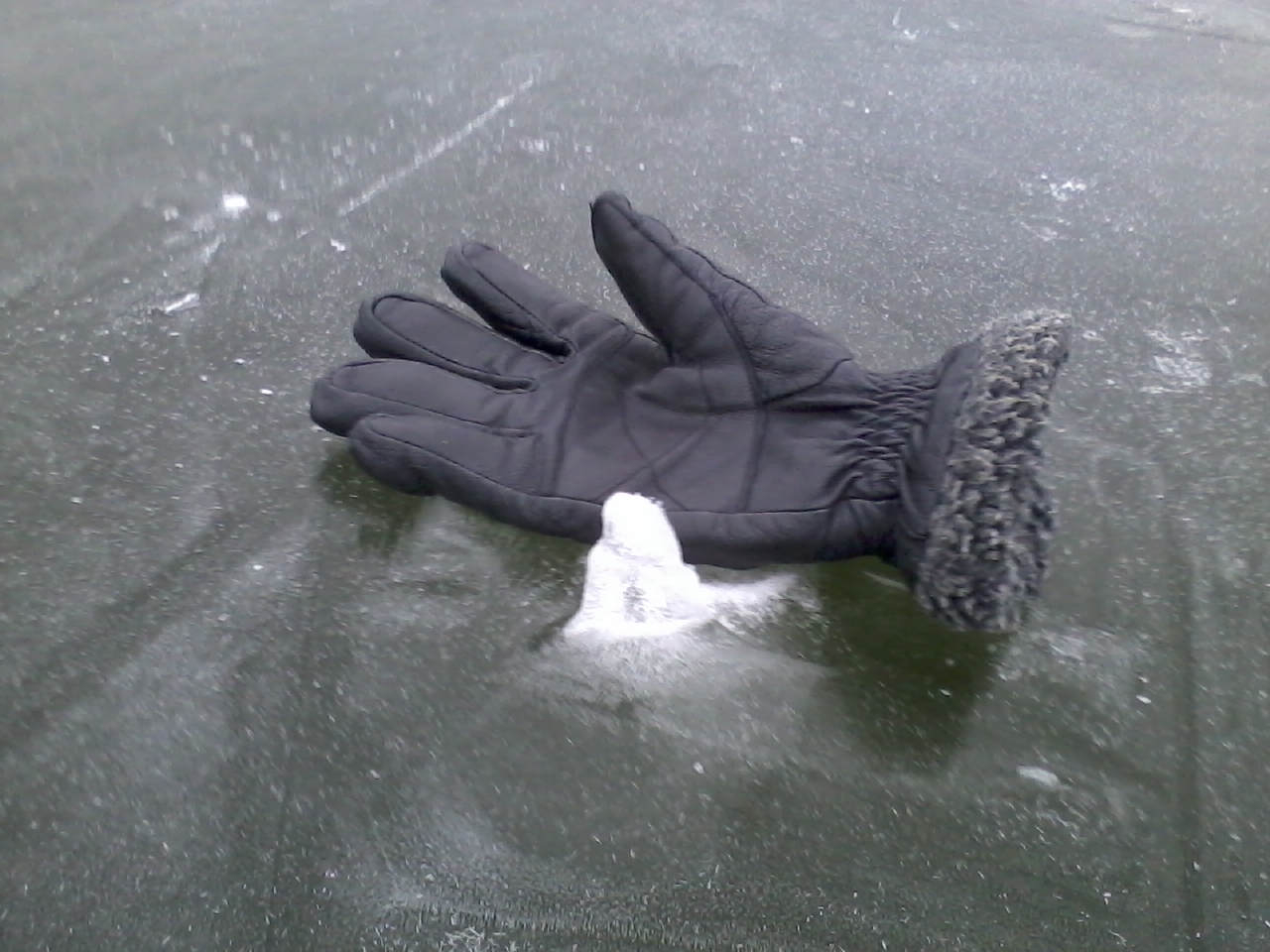Ice Spikes



These pictures are ice spikes that were photographed by Jan-Erik Gustafsson on Vallentunasjön(a lake in Sweden). The following is his description of how they form and why they are so uncommon.
*********************************************************
I have some thoughts about ice spikes. It’s a complicated process and several factors have to combine to form them. That is the reason why they are rare. I have seen them twice. The first time was on Lake Runn and the other time was on Vallentunasjön which is close to my house. My pictures are from there.
I think that ice spikes never form on new ice. Some old, quite smooth ice is needed. Then a layer of water forms on the ice from rain, melting or condensation. This layer will eventually freeze and if the water is clean and the freezing is slow, large ice crystal may form. The large ice crystals are mostly triangular and you can see the borders between the crystals as straight lines in the ice. In the next step we need very clean water. We can get this from the warm moist air moving in over the cold ice with a warm front. The moisture in air will condense on the cold ice and the water layer will be very clean. There should be no snow and very little rain accompanying the front; otherwise the water on the ice will not be clean. Eventually the front will move away, we will get a clear sky and freezing conditions. If there is no wind the thin water layer will cool quickly. To form ice crystals some disturbance is needed. If there is no disturbance the water will be subcooled. With clean water and no wind, the only disturbances available are the borders between the ice crystals of the previously formed ice. New ice starts to grow from these borders in all directions in the water. Eventually a puddle with an ice ridge around it will form. The water in the puddle will continue to freeze at the ridge were water, ice and air meet. The ice takes more volume than the water and when it grows into the puddle the level must rise. This process continues until the ridges from the different borders meet. This explains the formation of mound, but not the spike.
The pressure within the mound may prevent the mound roof to close completely. The process then continues until all water in the mound is frozen or until the pressure becomes too low to for the water to rupture the roof. This continued process forms the spike. It is thin because the mound has almost closed and the size of the channel in the middle of the spike should depend on the cooling rate and the amount of remaining water. The angle of the spike should depend on the geometry of the original ice crystal. Some heat must escape from the water through the upper walls of the mound. If the mound is small this heat loss may be enough to close the mound completely before the spike has formed. In my picture with the glove there is no spike. The ice crystal under this mound was also smaller than the other two crystals.
This is my theory of ice spikes. If I’m not completely wrong I think the theory explains the formation and some aspects of the ice spike geometry, but there many other details that need to be explained.
End of Jan Erik's explanation
*********************************************************************
They also are occasionally seen on ice covered bird baths. On lakes they most likely form on partially frozen puddles with no connection to the the water under the ice sheet. The spike then forms in the frozen surface of the puddle. From the pictures above there is also a mound of ice at the base of the spike. I have seen plenty of puddles that have frozen but I have not spotted an ice spike. One reason is even small amounts of dissolved solids interfere with the spike formation process. Or maybe I have not been paying enough attention.
Click here for a U Tube video with more details about how they form.
Jan Erik also developed an ice growth prediction program for growth from when it get its first skim of ice up to 3".
